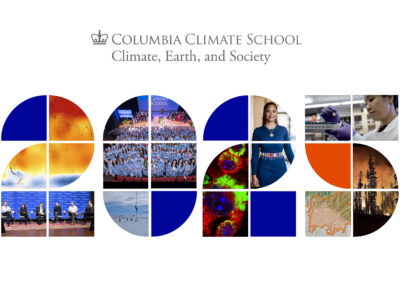Pollen seasons are 20 days longer and present 21 percent more pollen than in 1990—according to a new study just published in Proceedings of the National Academy of Sciences. The research shows that human-caused climate change played a significant role in pollen season lengthening and a partial role in increasing the pollen amount. This is the first study to look at pollen trends at a continental scale and explicitly link pollen trends to human-caused climate change.
“We still hear about climate change impacts as something in the future, but this study shows that it is already occurring, and there will be health consequences, especially for allergy sufferers,” said Lewis Ziska, associate professor of environmental health sciences at Columbia University Mailman School of Public Health, and senior author of the study.
Allergies to airborne pollen can be more than just a seasonal nuisance and are tied to respiratory health, with implications for viral infections, emergency room visits and even children’s school performance. More pollen, hanging around for a longer season, makes those impacts worse.
The research team compiled measurements between 1990 and 2018 from 60 pollen count stations across the United States and Canada, maintained by the National Allergy Bureau. (Find the map of stations here.) These stations collect airborne pollen and mold samples, which are then hand-counted by certified counters. The researchers applied statistical methods to the pollen trends in conjunction with nearly two dozen climate models to determine if changes in pollen are a result of climate change.
The findings showed that climate change alone could account for around half of the pollen season lengthening and around eight percent of the pollen amount increasing. By splitting the study years into two periods, 1990-2003 and 2003-2018, the researchers found that the contribution of climate change to increasing pollen amounts is accelerating.
Although nationwide pollen amounts increased by around 21 percent over the study period, the greatest increases were recorded in Texas and the Midwestern U.S., and more among tree pollen than among other plants.
Pollen seasons today start around 20 days earlier than in 1990, suggesting that warming is causing the plants’ internal timing (also called its phenology) to start producing pollen earlier in the year, according to the authors.
“The strong link between warmer weather and pollen seasons provides a crystal-clear example of how climate change is already affecting peoples’ health across the U.S. Climate change is already here in every spring breath we take and increasing human misery,” says William Anderegg of the University of Utah School of Biological Sciences, and first author. “The biggest question is—are we up to the challenge of tackling it?”
The study was supported by the David and Lucille Packard Foundation, the National Science Foundation and the USDA National Institute of Food and Agriculture.
Adapted from Columbia University’s Mailman School of Public Health




Sorry, no matter what Science or Study you cite, my friends Sean Hannity, Tucker Carlson, and the Honorable Senator James Inhofe, (Republican -OK) will say it’s “FAKE NEWS” AND IT’S A HOAX!
Sean earns $36 million and Tucker $6 million a year on TV and Inhofe does alright too.
As long as people either listen to or vote for Deniers, not much progress will be made.